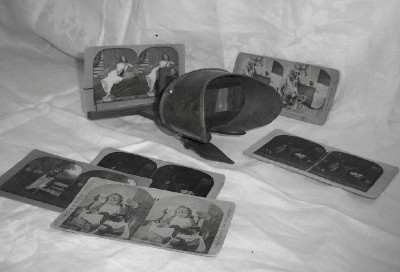
Stereoscopic Entertainment
Posted by Dustin Horton // March 3, 2014 // Articles
We all enjoy looking at pictures. We create photo albums and scrapbooks to share with others. It was no different in the 19th century and early 20th century.
The best way to share photos of interest, information, and start a conversation was to use a stereoscope. It is a simple device to operate. It has a hooded double lens unit with a wooden bar sticking out the front. On the bar is a sliding mechanism that holds a stereograph card. The focus point is adjusted by sliding the picture closer to, or farther away from, the lenses.
The stereographs are comprised of two identical photos, side by side. When viewed through the stereoscope, the image is fused into one image with a realistic depth making it three dimensional.
Its popularity increased greatly as it was improved by mid-nineteenth century. The government saw a source of cash in its popularity, and began putting revenue stamps on the cards.
The views were universal: foreign lands, festivals, transportation, World’s Fairs, farm scenes, darling children, pretty landscapes, etc. During WW I scenes of the war were popular views. Using stereoscopes enabled one to view world pictures from the comfort of the parlor, and share those scenes with friends and family. It was an educational tool for all ages.
When new forms of media appeared, such as radio, records, the movies, etc., interest in stereoscopes waned. By World War II most were no longer used. However, the child’s Viewmaster toy continued the tradition of 3D viewing entertainment well into the 20th century.
By Karen Hewitt













